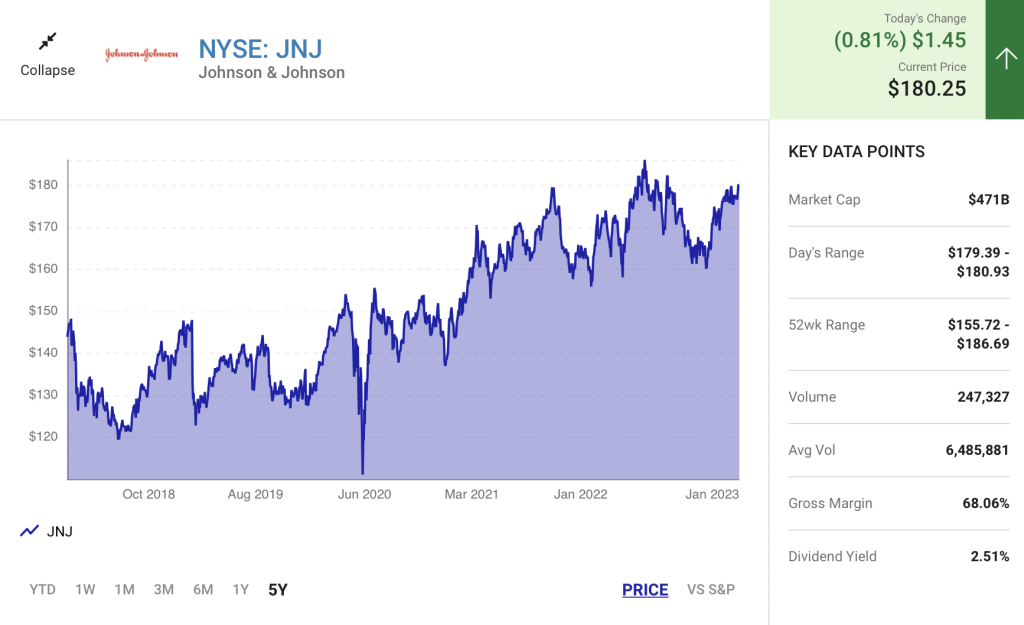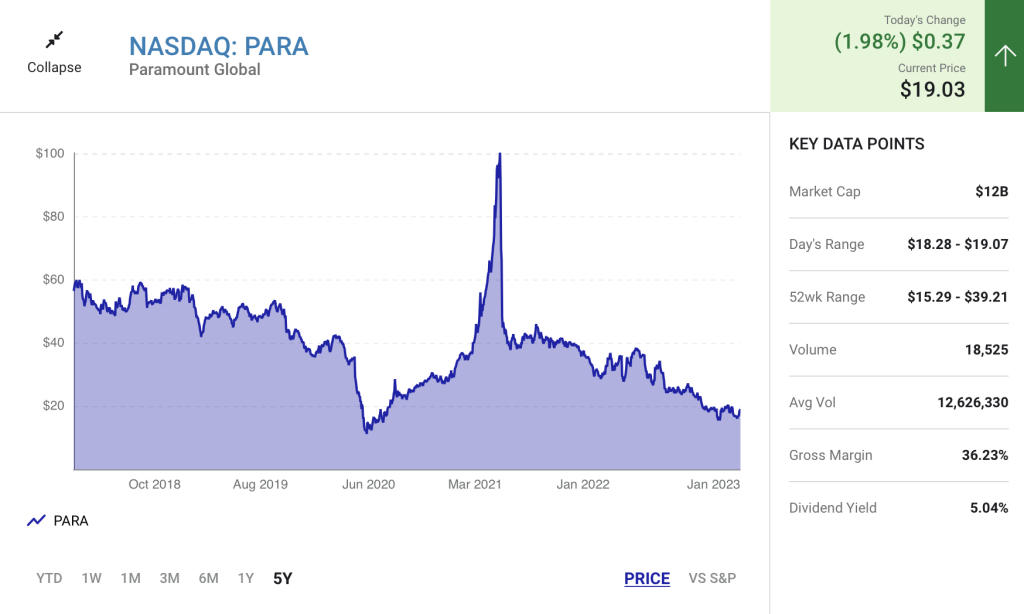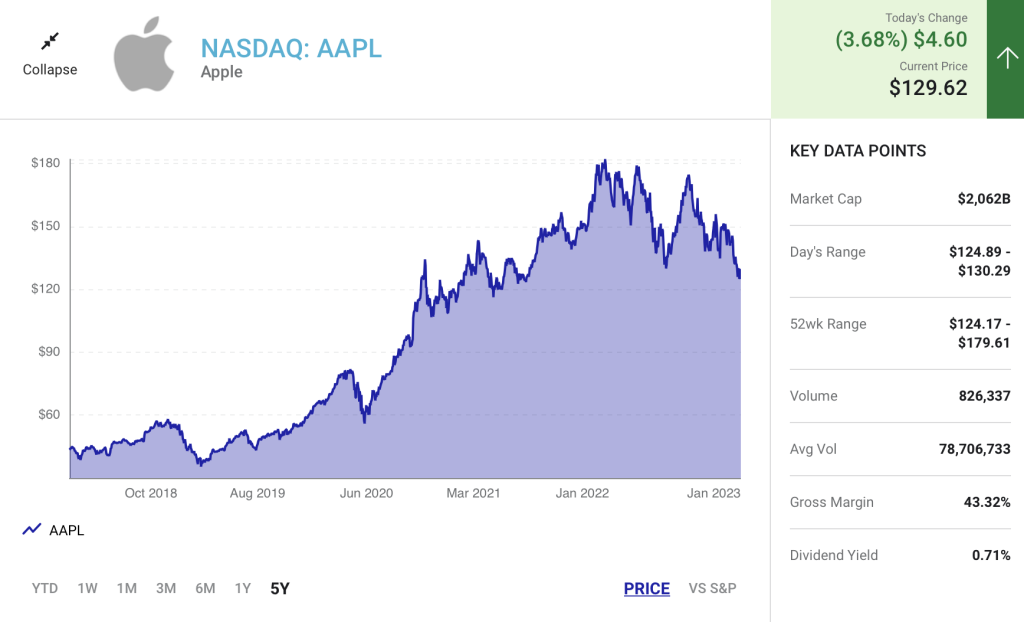Two Buffett stocks stand out as clear-cut buys in the new year, while another top holding has lost much of its luster.
Berkshire Hathaway (BRK.A 1.75%) (BRK.B 1.85%) CEO Warren Buffett knows a thing or two about building wealth on Wall Street. Since taking the reins as CEO in 1965, he’s created almost $690 billion in value for shareholders and overseen a greater than 3,700,000% return in his company’s Class A shares (BRK.A).
The Oracle of Omaha also has a knack for outperforming during periods of uncertainty. Whereas the benchmark S&P 500 tumbled 19% in 2022 and entered a bear market, Berkshire Hathaway’s stock finished the year higher by 4%.
As we move headlong into a new year, two Warren Buffett stocks stand out as no-brainer buys that can continue delivering for their shareholders. Meanwhile, the Oracle of Omaha’s top holding is one that investors can easily avoid in 2023.
Warren Buffett stock No. 1 that’s a no-brainer buy in 2023: Johnson & Johnson
Although it’s not a particularly large holding in Berkshire Hathaway’s investment portfolio, healthcare conglomerate Johnson & Johnson (JNJ 0.81%) stands head-and-shoulders above its peers as a no-brainer buy in 2023.
To begin with, healthcare stocks tend to be highly defensive. Since we have no control over when we get sick or what ailment(s) we develop, there’s always going to be a need for prescription drugs, medical devices, and healthcare services in any economic environment. This steady demand for drugs, devices, and services is what helped J&J grow its adjusted operational earnings every year for 35 years, leading up to the COVID-19 pandemic.

In 2023, Johnson & Johnson will be spinning off its consumer health products division, which will be known as Kenvue. This segment, which includes top-tier brands such as Tylenol and Listerine, generated $11.2 billion in sales through the first nine months of 2022 and produced nearly $2.3 billion in earnings before taxes. J&J will still be the majority shareholder following the upcoming spinoff.
Although J&J’s consumer health segment offers strong pricing power and predictable operating cash flow, it’s generally a slow-growing division. Not only will this spinoff raise capital for J&J, but it’ll place even more emphasis on the company’s faster-growing operating segments: pharmaceuticals and medical technology.
The beauty of brand-name drugs is they provide juicy operating margins and account for most of J&J’s sales growth. Unfortunately, brand-name drugs offer a finite period of sales exclusivity. Johnson & Johnson counters the possibility of a patent cliff from its drug portfolio by reinvesting in drug development, acquiring new pipeline products, and relying on its medical device segment. As the global population ages, demand for all types of medical devices should climb.
But during a period of heightened uncertainty, it’s J&J’s balance sheet and capital-return program that really stands outs. Johnson & Johnson has increased its base annual dividend in each of the past 60 years and offers one of the largest dividends in the world, in nominal-dollar terms. Further, it’s one of only two publicly traded companies with the highest possible credit rating (AAA) from Standard & Poor’s, a division of S&P Global.
A multiple of 17 times Wall Street’s consensus earnings in 2023 is a fair price to pay for a phenomenal company like J&J.

Warren Buffett stock No. 2 that’s a no-brainer buy in 2023: Paramount Global
The second Warren Buffett stock that’s nothing short of a no-brainer buy for the new year is media behemoth Paramount Global (PARA 1.98%).
“Clobbered” is perhaps the one word that best describes what happened to media stocks last year. The growing likelihood of a U.S. recession has weakened advertising revenue for legacy TV media operations. Meanwhile, the expensive shift to streaming has led to a lot of red ink for virtually all legacy networks, including Paramount.
But there a number of important catalysts investors seem to be overlooking.
For starters, while advertising is cyclical, the ups and downs associated with ad spending disproportionately favors optimists. That’s because economic downturns usually only last a couple of quarters, whereas periods of expansion are measured in years. Skeptics have a tendency to pile on ad-driven businesses when the winds of recession blow. But as is the norm, they overshoot valuations to the downside without factoring in the length of economic recoveries and bull markets. In short, Paramount Global’s advertising revenue, while weak at the moment, should be of no concern to patient investors.
Despite segment-based losses, streaming is another bright spot for Paramount. The company closed out the September quarter with 67 million direct-to-consumer subscribers, which represents an increase of 20 million from the prior-year period. Best of all, it’s continued to grow the number of paying subs even after losing 3.9 million subscribers when pulling its services out of Russia during the second quarter.
Although Paramount+ rightly gets most of the attention, don’t forget about the nation’s largest free, ad-supported streaming platform, Pluto TV. If a recession does materialize in the U.S., consumers are more likely to seek ways to reduce their monthly expenses. Pluto TV’s freemium model would seem to be a perfect fit for such a scenario. Not surprisingly, average revenue per user and total viewing hours for Pluto TV have both been increasing.
Although media stocks don’t turn on a dime, history has shown that bear markets are a smart time to buy stakes in high-quality companies within this industry. At a multiple of 14 times Wall Street’s consensus earnings for 2023, Paramount Global looks like an incredible deal.
The Warren Buffett stock to avoid like the plague in the new year: Apple
On the other side of the aisle is a well-known Warren Buffett stock that I believe investors can easily avoid like the plague in 2023. I’m talking about Berkshire Hathaway’s top holding, Apple (AAPL 3.68%).
To be perfectly fair, Apple isn’t a bad company. It’s driven by innovation and an exceptionally loyal base of customers. Since introducing 5G-capable iPhones in late 2020, Apple has seen its U.S. smartphone market share soar to around 50%.
Apple is also benefiting from its ongoing shift to subscription services. Apple’s services segment is capable of sustained double-digit growth and higher operating margins than its physical products.
Additionally, Apple has repurchased $554 billion worth of its common stock over the past nine years. Not including itself, that’s more than the market cap of all but four of the other 499 companies that are part of the S&P 500.

But there are plenty of warning signs, as well. For example, Apple recently ratcheted down efforts to expand production of iPhone 14 since demand didn’t meet initial expectations. While some of this can be blamed on persistent overseas supply issues, historically high inflation, and weakening domestic and global economic outlooks, it may also have to do with iPhone 14 offering only minimal design changes from its predecessor.
Another issue for Apple is the Federal Reserve’s aggressive shift in monetary policy. In the past, Apple had taken advantage of historically low lending rates to take on debt and use that capital to repurchase its own stock. However, with access to cheap capital effectively gone, it’s not out of the question that Apple’s share buybacks could slow a bit. These buybacks have been instrumental in lifting the company’s earnings per share.
Once again, I’ll reiterate, Apple isn’t a bad company. But at closer to 21 times Wall Street’s forecast earnings in 2023, sales growth of 2% to 3% simply won’t cut it. My prediction is we’ll see Berkshire Hathaway’s largest holding fall below $100 per share this year.
Read Next – “Future Fuel” will unleash $11 trillion wave of wealth
A brand new type of fuel has just been created that could put Tesla out of business.
Forbes, CNN, and Nature Magazine are calling it the “fuel of the future.”
And this “Future Fuel” is set to unleash an energy revolution that Goldman Sachs estimates will be worth $11.7 trillion.
That’s 10X bigger than the electric battery market.
Don’t forget — Tesla has returned 41,405% to shareholders over the last 10 years.
But the amount of wealth up for grabs from the “Future Fuel” revolution could put those returns to shame.
That’s why billionaires like David Shaw and Jeff Yass are pouring hundreds of millions of their own money into this “Future Fuel.”
And top Tesla executives are fleeing the company en masse in order to take part in the “Future Fuel” revolution.
They know what’s coming.
They know that “Future Fuel” will mint an entire new class of millionaires — maybe even billionaires.
And early investors will make an absolute fortune.
All the details of the “Future Fuel” revolution are right here.
See how you could take part in this historic wave of wealth today.





